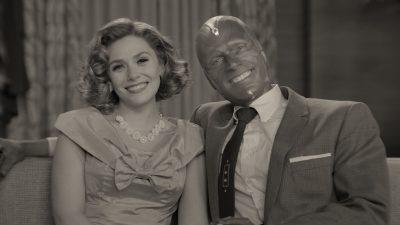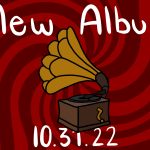Over the course of this semester, some friends and I decided to watch all the Marvel Cinematic Universe movies in the order they were released.
This ended up being 23 movies and one completed television series season in total. It was a massive amount of content which took us about two months to finish.

As someone who has been a Marvel fan for years, this was exciting and nostalgic. I still remember seeing most of the movies in theaters, watching this massive universe slowly come together.
I had seen all the movies before, but some friends had not, so it was enjoyable to follow them as they discovered the excitement of Marvel.
My all-time favorite character, introduced in “Avengers: Age of Ultron,” is Wanda Maximoff. Her backstory — growing up in a war-torn country, joining a dangerous experiment, attempting to take down the Avengers, coming around and becoming a member of the team — grabbed me from her first introduction.
Wanda endures so much throughout Marvel’s Phase Three, which includes movies such as “Avengers: Infinity War” and “Avengers: Endgame.” She experiences immense loss and pain, as well as a fear of her abilities and how they may affect others.
This pain and torment culminates in “WandaVision,” Marvel’s 2021 Disney+ series. The series opens with Wanda and her husband, Vision, in a New Jersey town. The episode is in black-and-white, emulating the sitcoms of the 1950s.
It is a jarring but necessary departure from previous Marvel productions, which usually have a very traditional action movie structure. Even the way “Wandavision” is shot is wildly different from Marvel films.
“WandaVision” utilizes a 4:3 aspect ratio, meaning the show is played in more of a square shape than the wide rectangle Marvel typically uses for its films. The show’s use of black-and-white also reflects Marvel’s new approach to this production.
These cinematic techniques complement the material, which diverges from the traditional Marvel structure.
Each episode takes viewers through a different decade of television. The first episode reflects the 1950s, the second is the 1960s, the third is the 1970s and so on. Everything — setting, costumes and colloquialisms — changes to fit each new period, making the show a love letter to these iconic eras of television.
These homages to classic television also have a personal significance to Wanda as a character, which the show explains throughout its nine episodes. What appears to be a fun and nostalgic drive down television’s memory lane becomes somewhat heartbreaking as we learn about Wanda’s past.
The story is expertly plotted and executed. I never found myself bored, nor did I think the show had any wasted moments. I watched “WandaVision” as it came out, with each episode becoming available on Disney+ every Friday. Every week, I was on the edge of my seat and my mind raced with theories.
I am especially glad Marvel chose to go in this direction with “WandaVision” and their next few releases, “The Falcon and the Winter Soldier” and “Loki.” Viewers will get new insight into these characters whom Marvel has previously pushed to the side in favor of bigger names like Captain America and Iron Man.
Honestly, I didn’t care much for Vision before “WandaVision” came out, but I have a newfound interest and respect for the character. I always loved Wanda, but now her character has a new depth that I adore. I hope future series continue to also give us a new appreciation for lesser-known Marvel characters.
Overall, “WandaVision” is perhaps my favorite content Marvel has released, rivaled only by “Avengers: Infinity War” and “Black Panther.” Its story is so unique and creative, especially for Marvel, whose movies can feel formulaic.
“WandaVision” is a stark and moving portrayal of grief topped off with classic television references and a healthy amount of action sequences. Marvel pulled off an ambitious and risky release, creating such a unique story released directly to a streaming service.
However, I’d say it paid off, since “WandaVision” was met with critical acclaim and audience approval.
I love “WandaVision” and deeply appreciate the creativity and vision that went into its production. If you’re a Marvel fan or want to be one, I highly recommend getting into “WandaVision.”














